'5.11 Tactical' have just released a new series of lights designed specifically with the requirements of Search and Rescue professionals, the S+R range. Here I am testing the two flashlights/torches, the A6 and A2.
Although not privy to the design considerations 5.11 Tactical state have come from seasoned Search and Rescue professionals, the basic designs suggest this requirement was for a no-nonsense simple reliable, predictable series of lights.
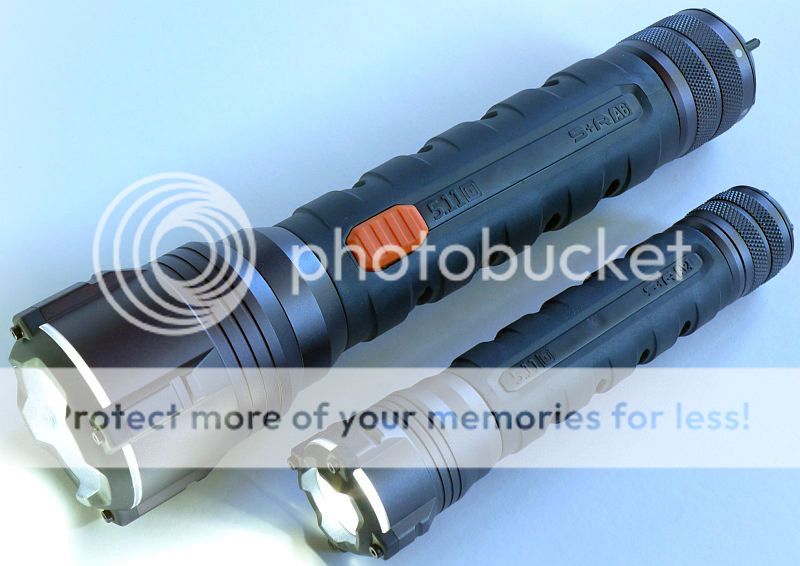
Initial Impressions:
5.11 always seem to come up with unique looking designs, and the S+R A6 and A2 are no exception. The head of each light has a series of four lugs which provide anti-roll function and a fixing point for the four bezel/lens-retaining screws.
Each of the lights has greater heft that you might expect for the 2xAA or 6xAA power source used. What this does is to give both lights a reassuring presence and make them easy to grab and hold securely.
The switches stand out clearly with orange covers making it impossible to miss the buttons.
It is an interesting concept and one which shows that there are certain practicalities that are not improved by reducing the size. Simple, clear design and functionality, and sized to feel comfortable and secure. 5.11 may be bucking the trend in light design, but are doing so for the practicality these designs bring.
What is in the box:
Both lights come in blister packaging with the claimed 602lm for the A6 and 237lm for the A2.
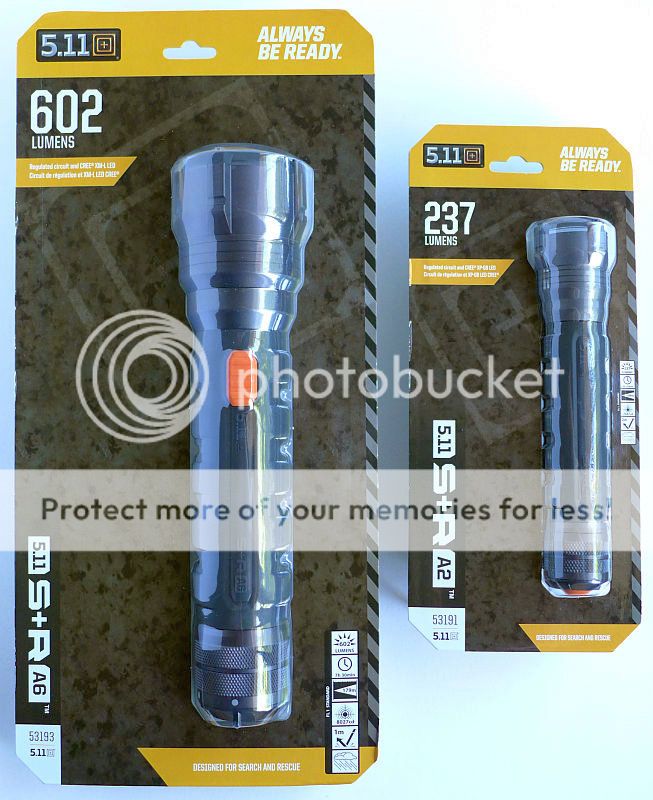
Both lights are supplied with Duracell Alkaline cells.
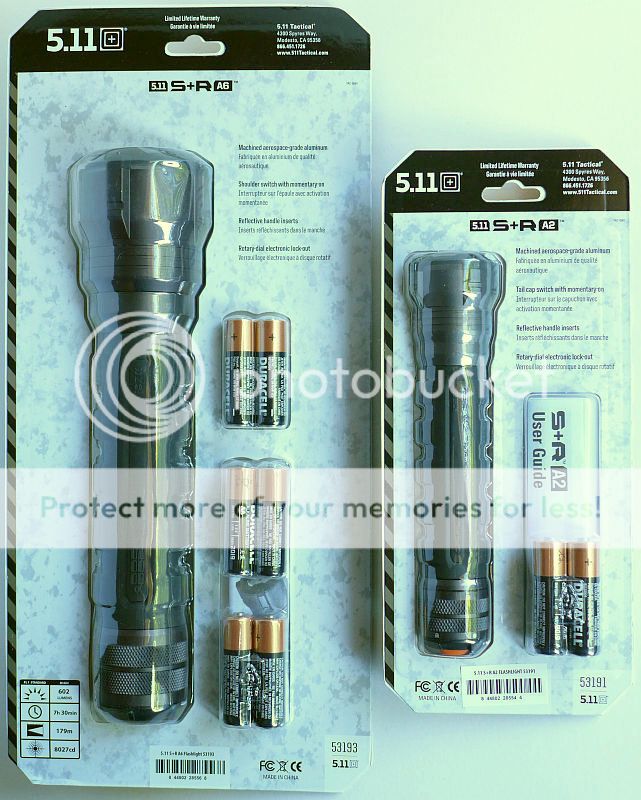
There are no spares, just the A2, two alkaline cells and the user guide.
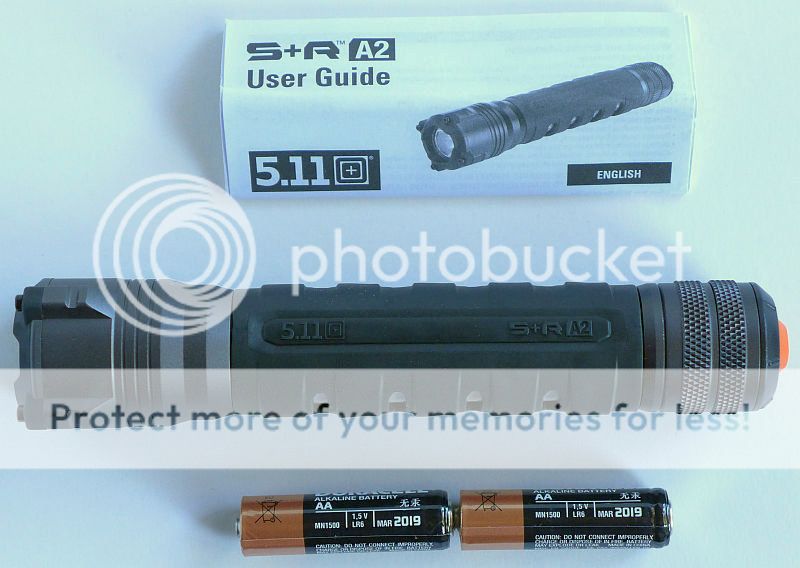
The same is true of the A6 which has no spares, just the A6, six alkaline cells and the user guide.
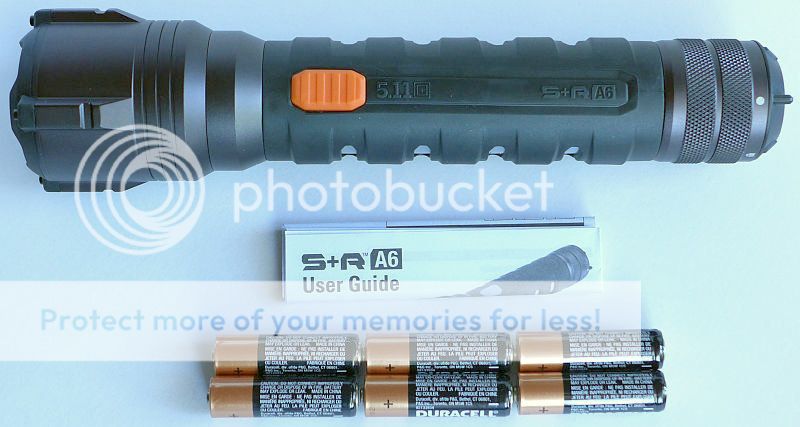
Taking a closer look and looking inside – A2:
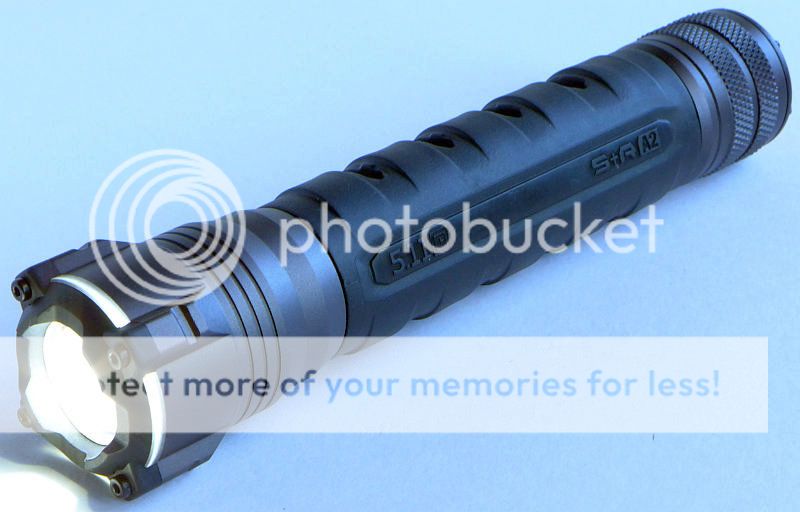
The A2's lens is held onto the front of the head by a clamp. The edges of the lens are exposed and frosted. This means that they light up when the A2 is on.
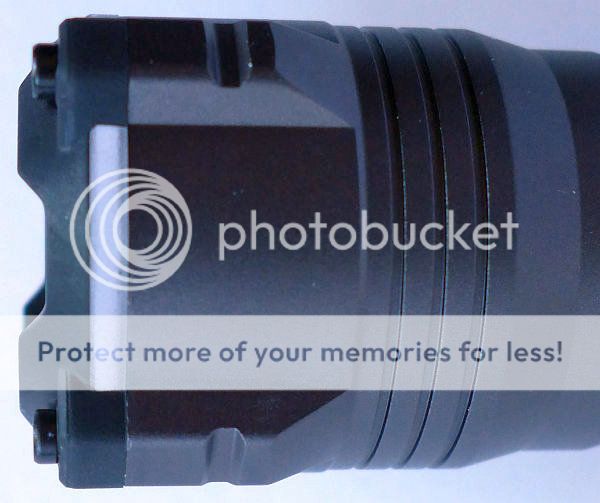
The edges of the lens light up when the A2 is on.
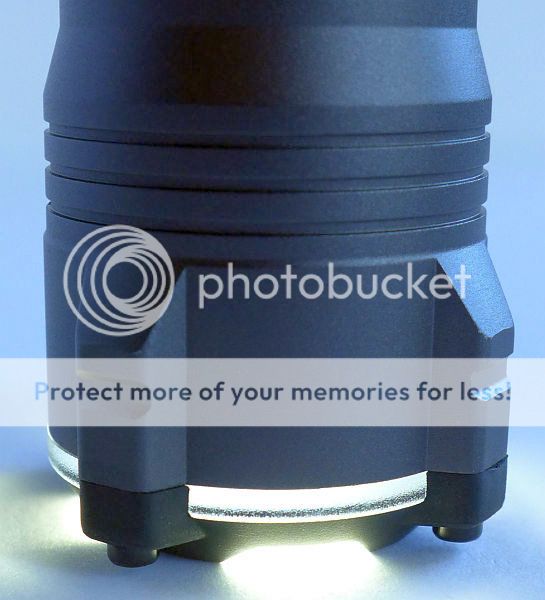
The silver coloured grip inserts are described as reflective, but in the sample I have, the paint is not reflective, beyond it silver colour.
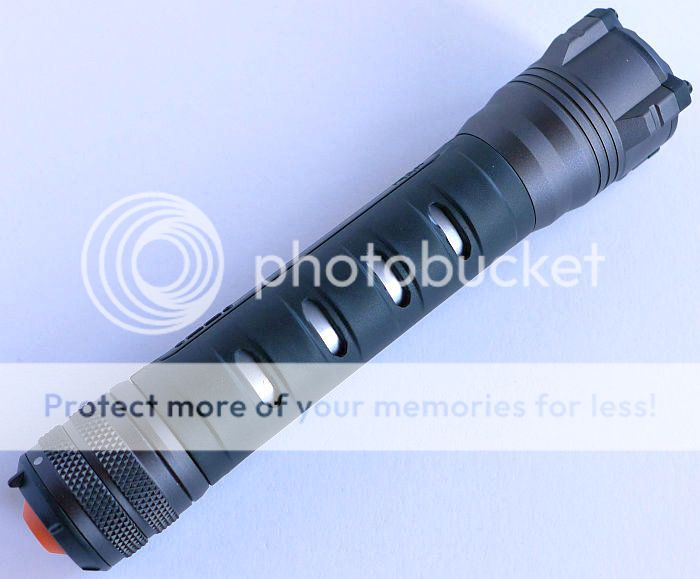
The rubber grip shows the battery configuration.
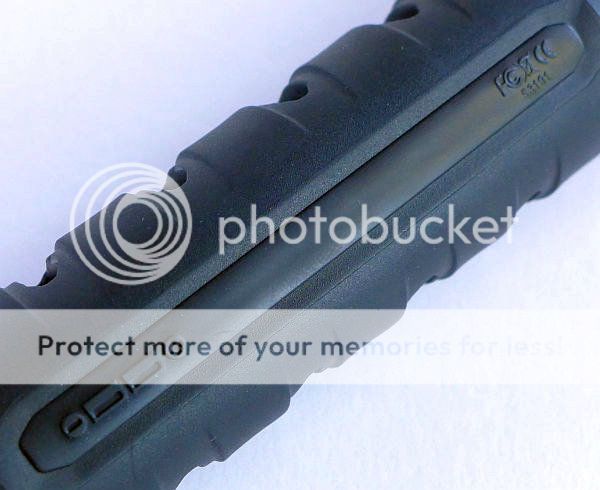
Like the 5.11 Tactical ATAC lights, the A2 has a lockout switch in the tailcap. Here it is shown unlocked (in this position the light does come on).
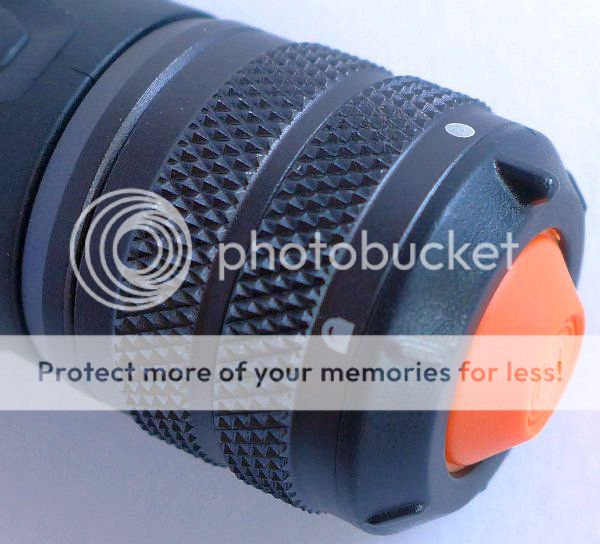
Turning the lockout ring to the padlock symbol disables the switch.
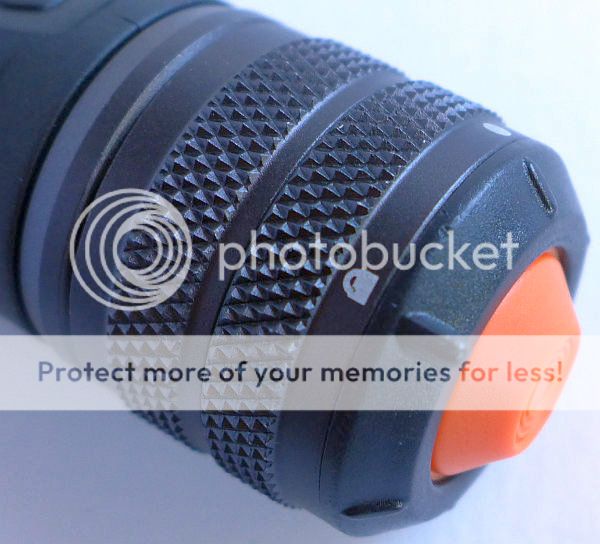
The A2 uses a TIR optic with the centre frosted, obscuring the view of the LED.
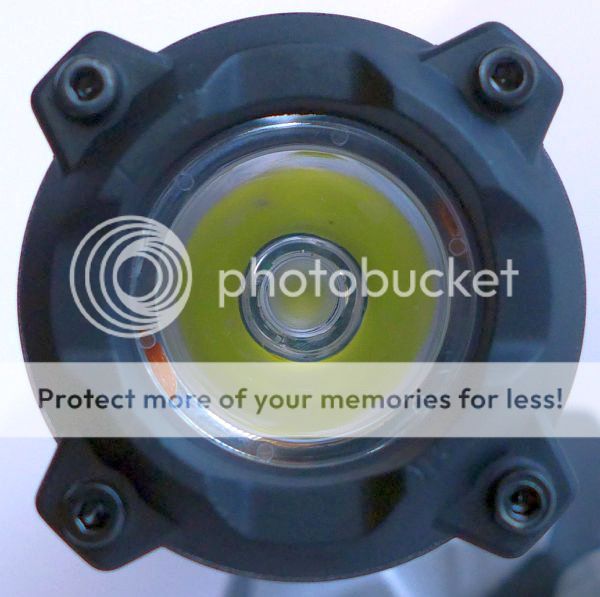
This angled shot shows better the depth and shape of the optic.
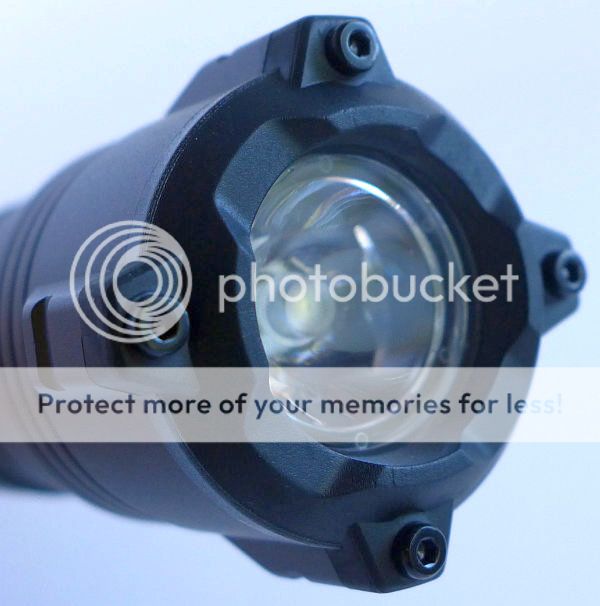
The battery tube is lined with plastic and gives a good fit for the cells.
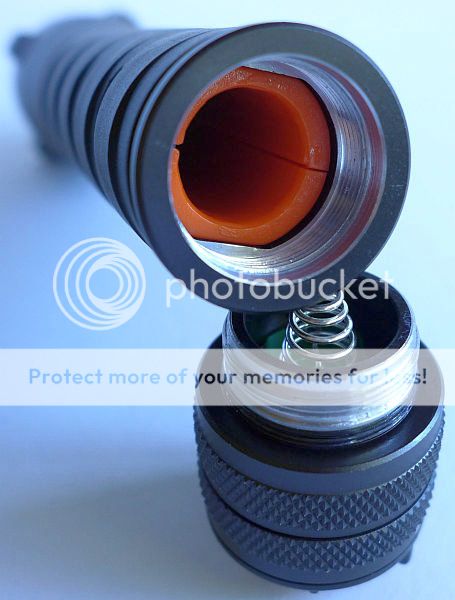
The positive contact.
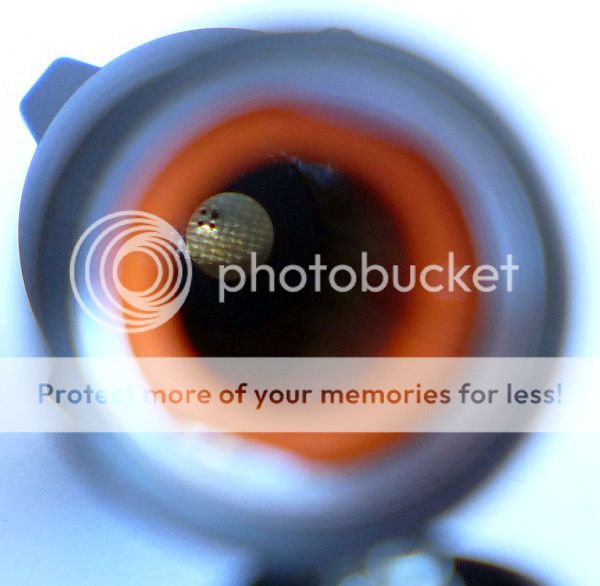
Threads are standard cut and bare aluminium.
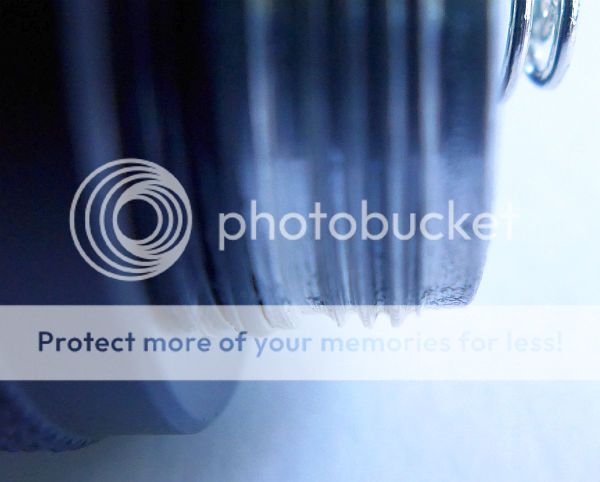
The negative contact is a spring.
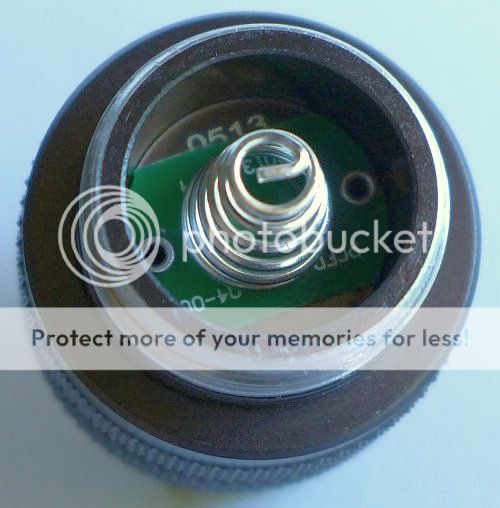
Taking a closer look and looking inside – A6:
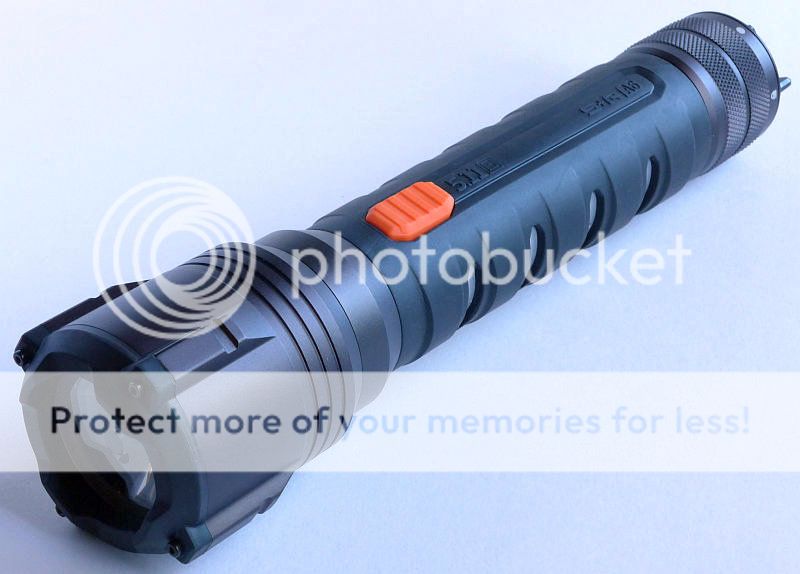
The A6 is a much larger light and a tailcap switch would not be practical. Instead the A6 has a side mounted switch and this is a forward clicky type.
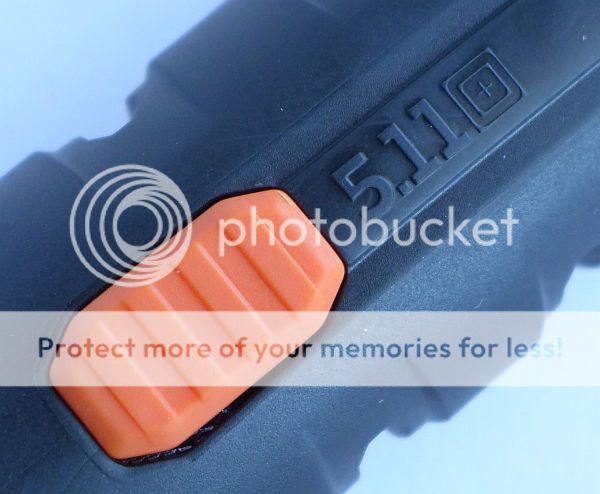
Like the A2, the A6 has silver grip inserts which are supposedly 'reflective', but are simply a silver colour.
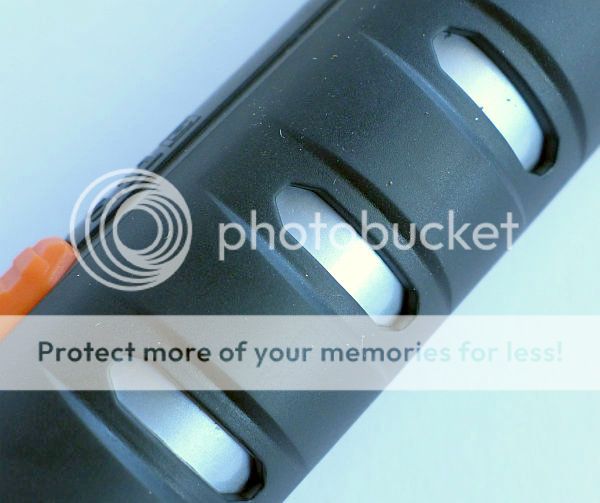
Again like the A2 and 5.11 Tactical's ATAC lights there is a lockout facility built into the tailcap. Here it is unlocked.
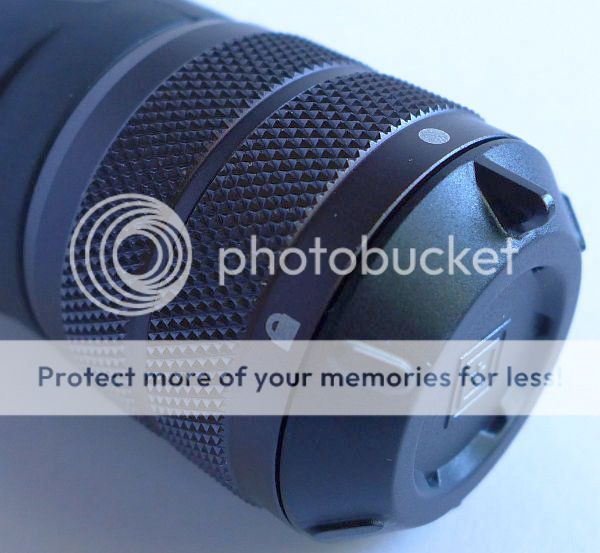
And locked.
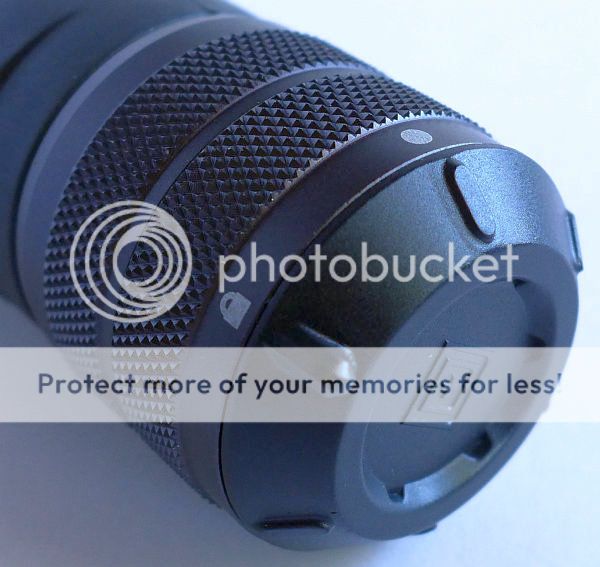
The A6 also uses a TIR optic.
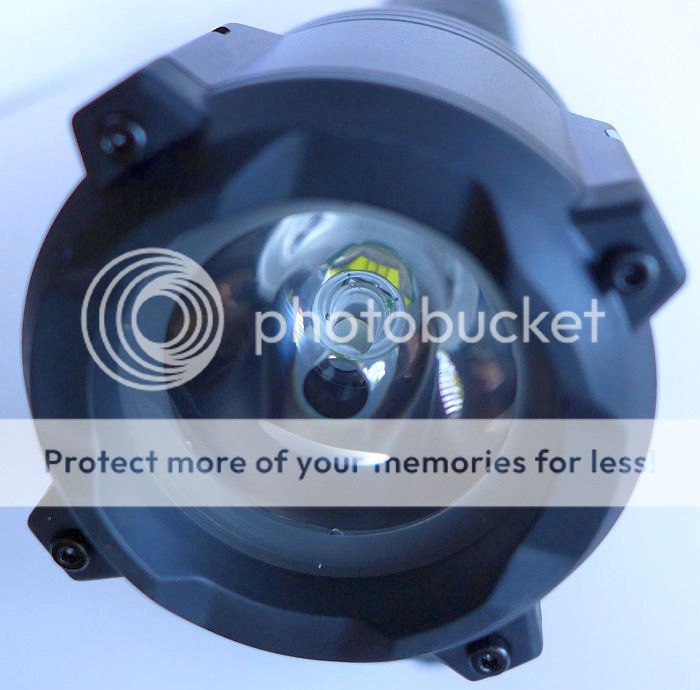
The LED is not directly visible due to the optic's design
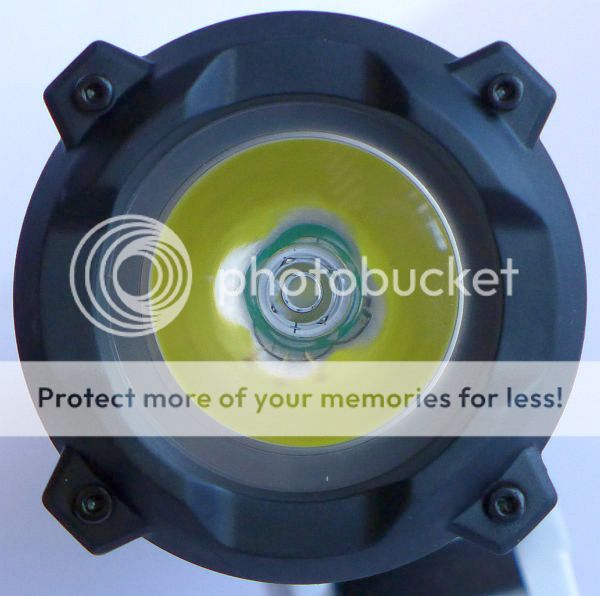
Inside the A6's tube a plastic liner holds the two columns of 3 AA cells
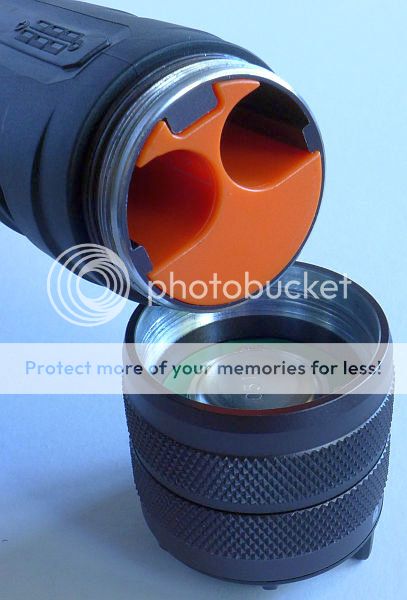
In the A6 the positive contacts are the springs.
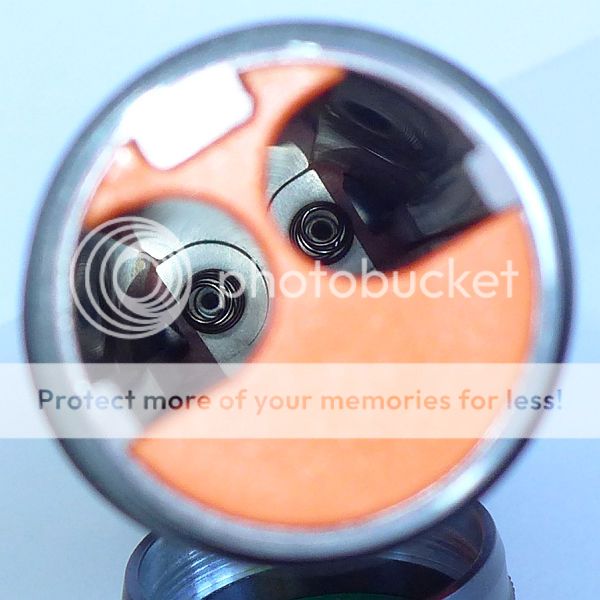
The threads are standard cut and bare aluminium.
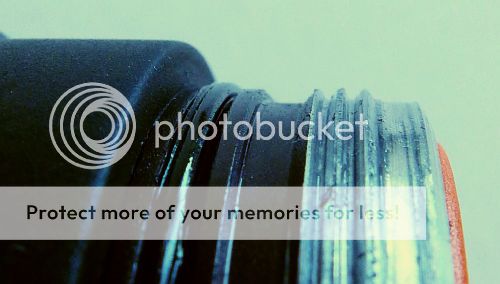
The negative contact is a metal disc to allow it to rub over the ends of the two columns of AAs.
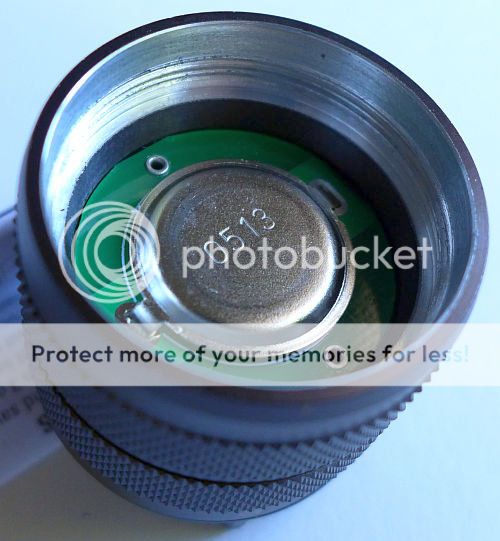
The rubber grip has a cell configuration diagram.
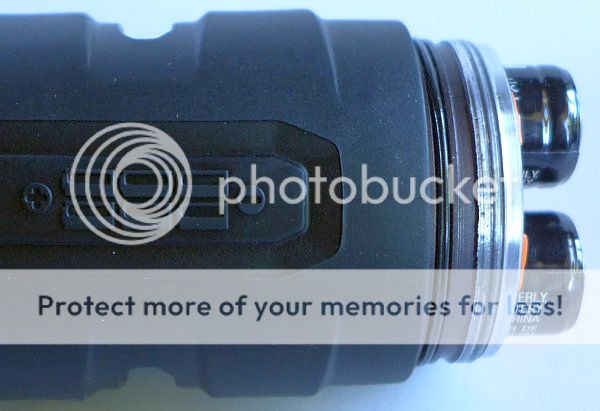
Just like the A2, the A6's lens edge lights up as it is exposed.
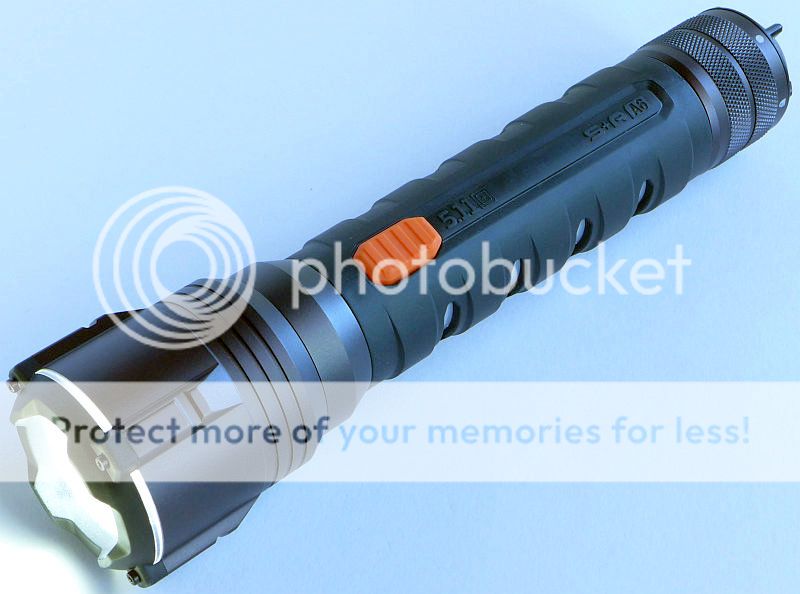
Modes and User Interface:
Both the A2 and A6 are examples of the KISS principle. Each has a forward clicky switch and a single output mode.
The only additional control is also the tail-cap lockout which they also both have.
Batteries and output:
The testing was carried out with Eneloop LSD Ni-Mh cells.
To measure actual output, I built an integrating sphere. See here for more detail. The sensor registers visible light only (so Infra-Red and Ultra-Violet will not be measured).
Please note, all quoted lumen figures are from a DIY integrating sphere, and according to ANSI standards. Although every effort is made to give as accurate a result as possible, they should be taken as an estimate only. The results can be used to compare outputs in this review and others I have published.
The runtime graph shows the output traces for both the A2 and A6.
The A6 has been run with 6xAA Eneloop cells and its alternate configuration of 3xAA Eneloops. For the A2, following the unexpected behaviour when running on Eneloops, the test was re-run using Alkaline cells.
For the A6, the output appears almost direct drive as the output declines steadily over time with an initial rapid drop from turn-on moving into a slower decline. Using only 3 cells provides very similar behaviour but with both lower output and shorter runtime. Despite the lower output, the A6 is perfectly useable with only 3 AAs
As you can see, the A2 has an initial output level that is maintained for around 10minutes, after which it drops to a much lower level. The lower level is then maintained for the majority of the runtime.
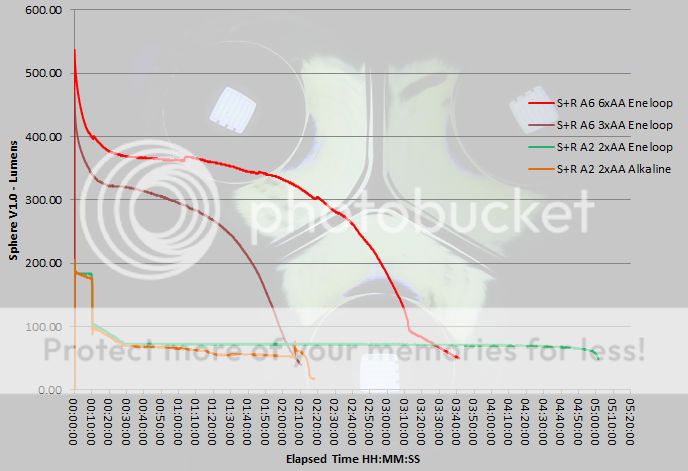
The beam
The A6's beam has a relatively narrow spill and a broad but bright hotspot. This configuration makes it more suited to outdoor middle distance work rather than close indoor work.
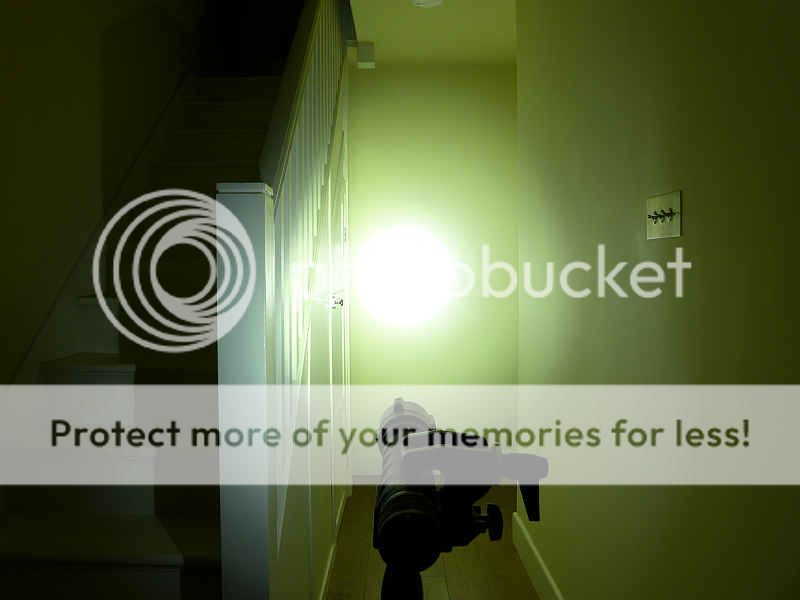
The A2's beam appears even narrower than the A6's, and bearing in mind the limited output of this light, the tighter beam allows for more range than it would otherwise manage.
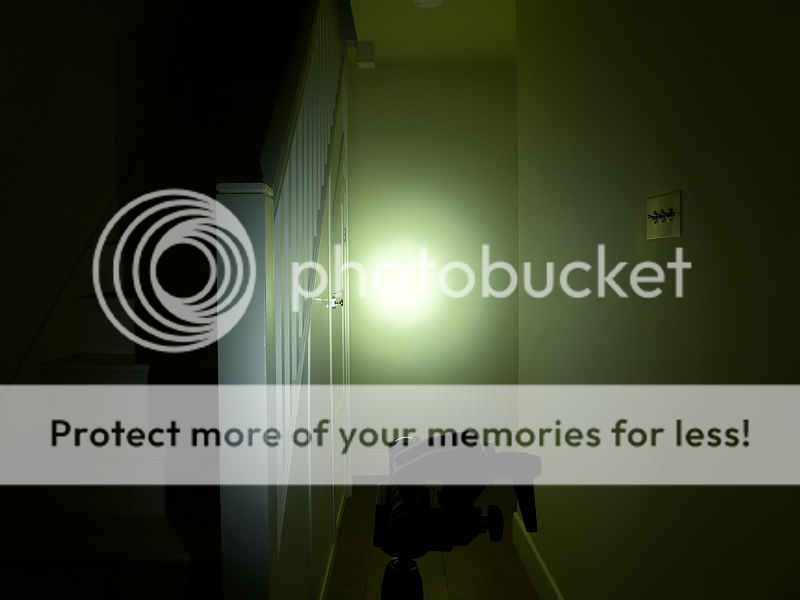
The A2's beam works better at outdoor ranges as the beam becomes smoother over the longer range.

Outdoors, the A6 gives a reasonable width and a hotspot with reasonable range.
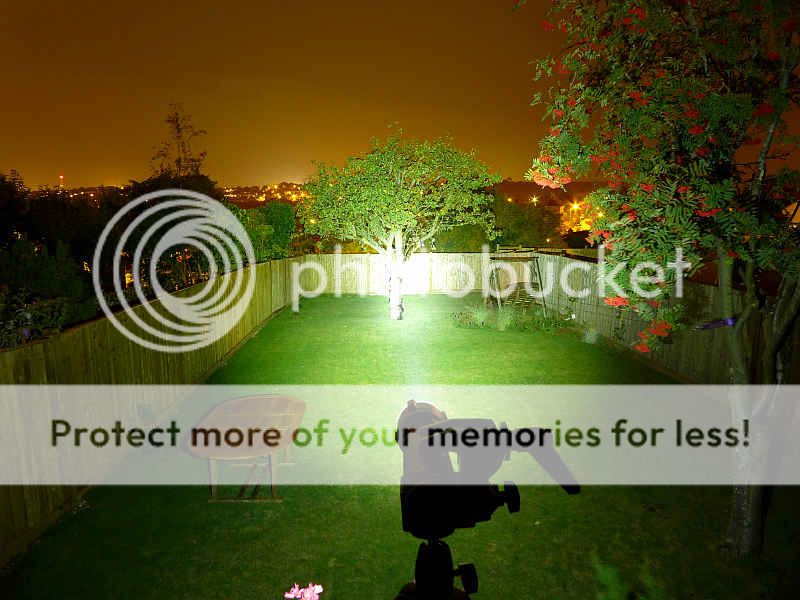
Directly comparing the beams shows the A6's far greater output.
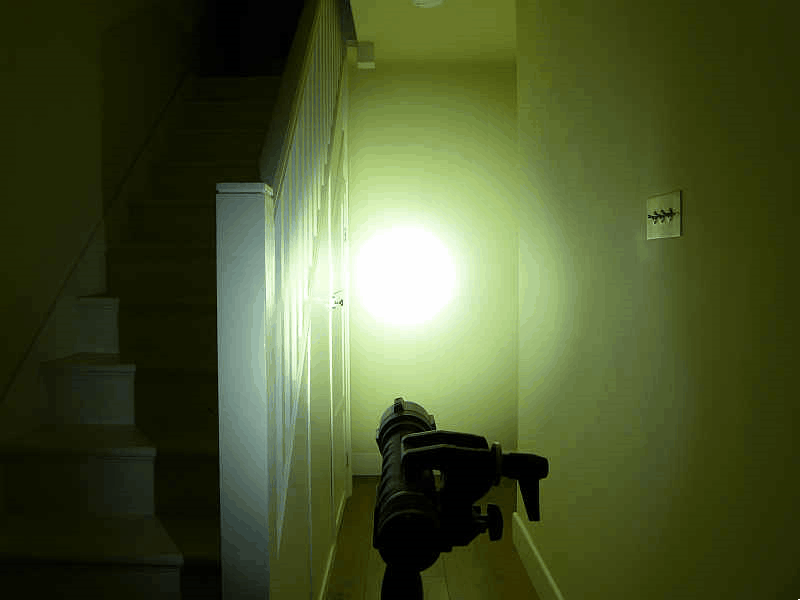
Comparing outdoors.
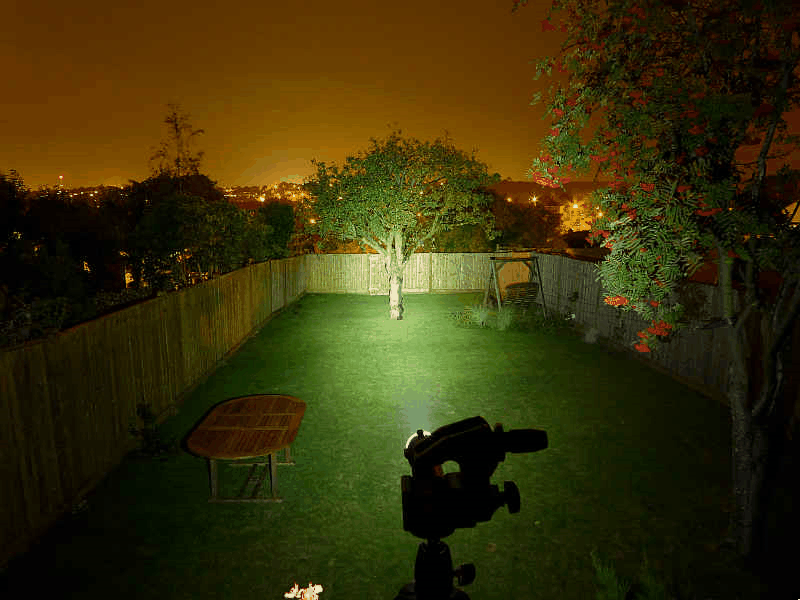
What are they really like to use…
Unlike many lights, you could hand these to anyone and they will work. No thinking about fiddly modes or worrying about them changing mode when you don't want them to (just make sure they are not locked-out before handing them over). The only embellishment over the most basic of designs is the lockout switch incorporated into the tailcap.
Neither light is compact, in fact both are chunkier than they could be, purely to give them more physical presence. No fiddly narrow tubes, these can be used with big hands, small hands, and wearing gloves and won't easily be lost.
Considering the plastic battery holder insert in the A6 takes up a lot of space within the tube, one extra feature I would have liked to see in the A6 is for this to be removable to allow the A6 to run on 3xC or D as well (the 6xAA are in 3S2P). However the A6 is one of the most ergonomic lights I have used, it goes back to old-school design with an easily held tube and a side switch that falls under the thumb. With this switch being a forward-clicky, the operation is so intuitive. Having a momentary operation side switch is a pretty unusual feature these days, but one that is exactly what I have been looking for.
For the A2 I'd have like to see better output regulation to give the highest output for longer, as the majority of the runtime is at a lower output level. The A6's output is very easy to live with, and as a single mode light, there are no lower levels to drop to, so the observed decline in output is simple and predictable and won't leave you in the lurch.
A simple interface, use of common AAs for power and comfortable to hold, means that although these might not appeal to gadget-freaks they will appeal to those wanting no-nonsense lights. All the 5.11 Tactical lights I have tested abide by this simple design philosophy, and the A2 and A6 being the simplest.
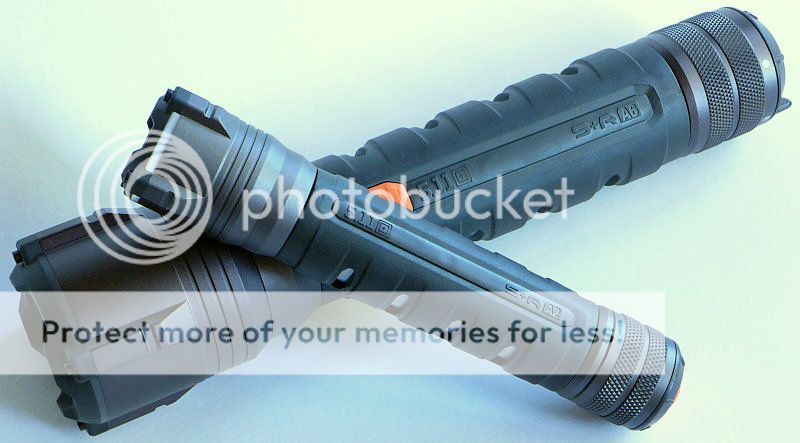
Test sample provided by 5.11 Tactical EU for review.
Although not privy to the design considerations 5.11 Tactical state have come from seasoned Search and Rescue professionals, the basic designs suggest this requirement was for a no-nonsense simple reliable, predictable series of lights.

Initial Impressions:
5.11 always seem to come up with unique looking designs, and the S+R A6 and A2 are no exception. The head of each light has a series of four lugs which provide anti-roll function and a fixing point for the four bezel/lens-retaining screws.
Each of the lights has greater heft that you might expect for the 2xAA or 6xAA power source used. What this does is to give both lights a reassuring presence and make them easy to grab and hold securely.
The switches stand out clearly with orange covers making it impossible to miss the buttons.
It is an interesting concept and one which shows that there are certain practicalities that are not improved by reducing the size. Simple, clear design and functionality, and sized to feel comfortable and secure. 5.11 may be bucking the trend in light design, but are doing so for the practicality these designs bring.
What is in the box:
Both lights come in blister packaging with the claimed 602lm for the A6 and 237lm for the A2.

Both lights are supplied with Duracell Alkaline cells.

There are no spares, just the A2, two alkaline cells and the user guide.

The same is true of the A6 which has no spares, just the A6, six alkaline cells and the user guide.

Taking a closer look and looking inside – A2:

The A2's lens is held onto the front of the head by a clamp. The edges of the lens are exposed and frosted. This means that they light up when the A2 is on.

The edges of the lens light up when the A2 is on.

The silver coloured grip inserts are described as reflective, but in the sample I have, the paint is not reflective, beyond it silver colour.

The rubber grip shows the battery configuration.

Like the 5.11 Tactical ATAC lights, the A2 has a lockout switch in the tailcap. Here it is shown unlocked (in this position the light does come on).

Turning the lockout ring to the padlock symbol disables the switch.

The A2 uses a TIR optic with the centre frosted, obscuring the view of the LED.

This angled shot shows better the depth and shape of the optic.

The battery tube is lined with plastic and gives a good fit for the cells.

The positive contact.

Threads are standard cut and bare aluminium.

The negative contact is a spring.

Taking a closer look and looking inside – A6:

The A6 is a much larger light and a tailcap switch would not be practical. Instead the A6 has a side mounted switch and this is a forward clicky type.

Like the A2, the A6 has silver grip inserts which are supposedly 'reflective', but are simply a silver colour.

Again like the A2 and 5.11 Tactical's ATAC lights there is a lockout facility built into the tailcap. Here it is unlocked.

And locked.

The A6 also uses a TIR optic.

The LED is not directly visible due to the optic's design

Inside the A6's tube a plastic liner holds the two columns of 3 AA cells

In the A6 the positive contacts are the springs.

The threads are standard cut and bare aluminium.

The negative contact is a metal disc to allow it to rub over the ends of the two columns of AAs.

The rubber grip has a cell configuration diagram.

Just like the A2, the A6's lens edge lights up as it is exposed.

Modes and User Interface:
Both the A2 and A6 are examples of the KISS principle. Each has a forward clicky switch and a single output mode.
The only additional control is also the tail-cap lockout which they also both have.
Batteries and output:
The testing was carried out with Eneloop LSD Ni-Mh cells.
To measure actual output, I built an integrating sphere. See here for more detail. The sensor registers visible light only (so Infra-Red and Ultra-Violet will not be measured).
Please note, all quoted lumen figures are from a DIY integrating sphere, and according to ANSI standards. Although every effort is made to give as accurate a result as possible, they should be taken as an estimate only. The results can be used to compare outputs in this review and others I have published.
| S+R A6 | I.S. measured ANSI output Lumens | PWM frequency (Hz) |
|---|---|---|
| High – Alkaline 6xAA | 515 | 0 |
| High – Eneloop 6xAA | 505 | 0 |
| High – Alkaline 3xAA | 382 | 0 |
| High – Eneloop 3xAA | 513 | 0 |
| S+R A2 | I.S. measured ANSI output Lumens | PWM frequency (Hz) |
|---|---|---|
| High – Eneloop 2xAA | 187 | 0 |
| High – Alkaline 2xAA | 187 | 0 |
The runtime graph shows the output traces for both the A2 and A6.
The A6 has been run with 6xAA Eneloop cells and its alternate configuration of 3xAA Eneloops. For the A2, following the unexpected behaviour when running on Eneloops, the test was re-run using Alkaline cells.
For the A6, the output appears almost direct drive as the output declines steadily over time with an initial rapid drop from turn-on moving into a slower decline. Using only 3 cells provides very similar behaviour but with both lower output and shorter runtime. Despite the lower output, the A6 is perfectly useable with only 3 AAs
As you can see, the A2 has an initial output level that is maintained for around 10minutes, after which it drops to a much lower level. The lower level is then maintained for the majority of the runtime.

The beam
The A6's beam has a relatively narrow spill and a broad but bright hotspot. This configuration makes it more suited to outdoor middle distance work rather than close indoor work.

The A2's beam appears even narrower than the A6's, and bearing in mind the limited output of this light, the tighter beam allows for more range than it would otherwise manage.

The A2's beam works better at outdoor ranges as the beam becomes smoother over the longer range.

Outdoors, the A6 gives a reasonable width and a hotspot with reasonable range.

Directly comparing the beams shows the A6's far greater output.

Comparing outdoors.

What are they really like to use…
Unlike many lights, you could hand these to anyone and they will work. No thinking about fiddly modes or worrying about them changing mode when you don't want them to (just make sure they are not locked-out before handing them over). The only embellishment over the most basic of designs is the lockout switch incorporated into the tailcap.
Neither light is compact, in fact both are chunkier than they could be, purely to give them more physical presence. No fiddly narrow tubes, these can be used with big hands, small hands, and wearing gloves and won't easily be lost.
Considering the plastic battery holder insert in the A6 takes up a lot of space within the tube, one extra feature I would have liked to see in the A6 is for this to be removable to allow the A6 to run on 3xC or D as well (the 6xAA are in 3S2P). However the A6 is one of the most ergonomic lights I have used, it goes back to old-school design with an easily held tube and a side switch that falls under the thumb. With this switch being a forward-clicky, the operation is so intuitive. Having a momentary operation side switch is a pretty unusual feature these days, but one that is exactly what I have been looking for.
For the A2 I'd have like to see better output regulation to give the highest output for longer, as the majority of the runtime is at a lower output level. The A6's output is very easy to live with, and as a single mode light, there are no lower levels to drop to, so the observed decline in output is simple and predictable and won't leave you in the lurch.
A simple interface, use of common AAs for power and comfortable to hold, means that although these might not appeal to gadget-freaks they will appeal to those wanting no-nonsense lights. All the 5.11 Tactical lights I have tested abide by this simple design philosophy, and the A2 and A6 being the simplest.

Test sample provided by 5.11 Tactical EU for review.
Last edited:

